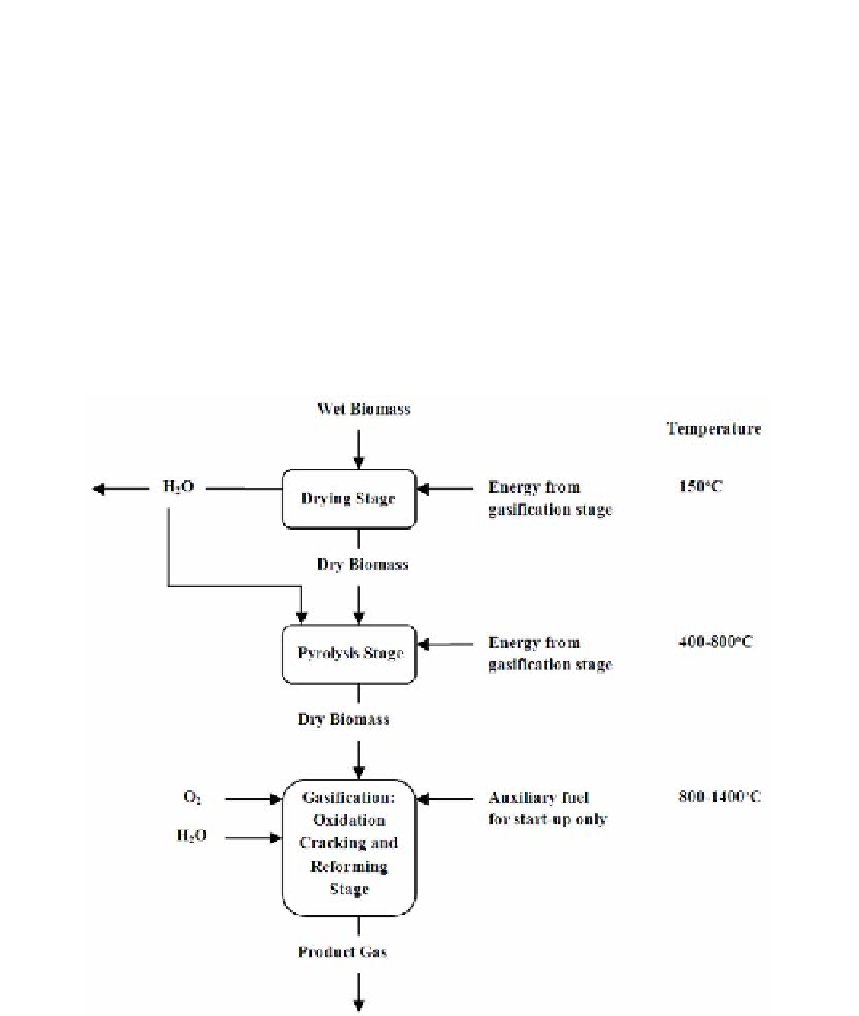Environmental Engineering Reference
In-Depth Information
prior to being fed to a gasifier. According to Kim and Parker (2008), the energy consumption
required to dry thickened waste activated sludge (TWAS) containing about 10% TS to a dry
sludge at 105°C is about 2220 kJ/kg-ws. It may be possible to use the enthalpy of the
producer gas for drying the sludge and biomass feedstock for the gasification. However, the
gasification of pulp/paper secondary sludge is a relatively new method and hence not very
well documented so far, except for several reports on gasification of a mix of municipal
sewage sludge and coal and other domestic waste (Dinkel et al., 1991; Baumgartel, 1993). For
dry sludge, the gasification technology has shown to be an energy efficient process. For
instance, Hamilton (1998) reported that gasification of dried sewage sludge thermally with
the Lurgi-Rhurgas process based on a circulating fluidized bed produced 0.7 m
3
of fuel gas
per kg of dry sludge (DS), and the calorific value of the gas was as high as 22.7 MJ/m
3
, i.e., a
total energy output of about 16 MJ//kg-DS. With dry sludge used, the total process can thus
be energetically self-sustaining (Furness et al., 2000).
Figure 5. Energy requirement in different stages of a typical gasification process (modified from
Furness et al., 2000)
2.4. Direct Liquefaction
Due to the skyrocketed oil price and the increased concerns over greenhouse gas
emissions, there is a worldwide resurgence of interest in the production of liquid oil products
(e.g., bio-oils and bio-crude) from biomass through liquefaction. Fast pyrolysis, as described

